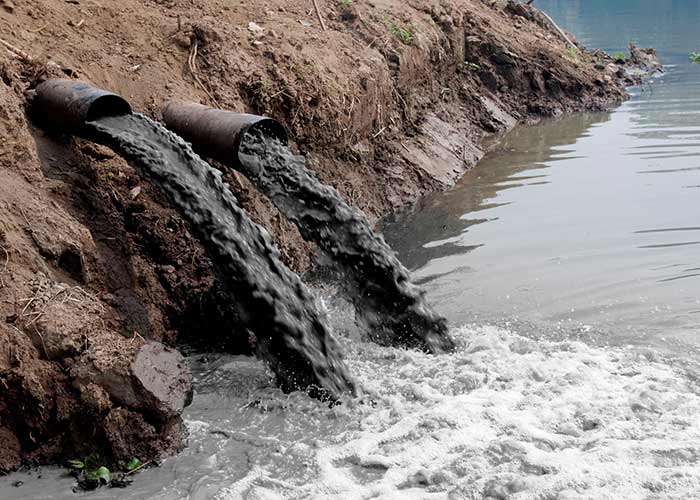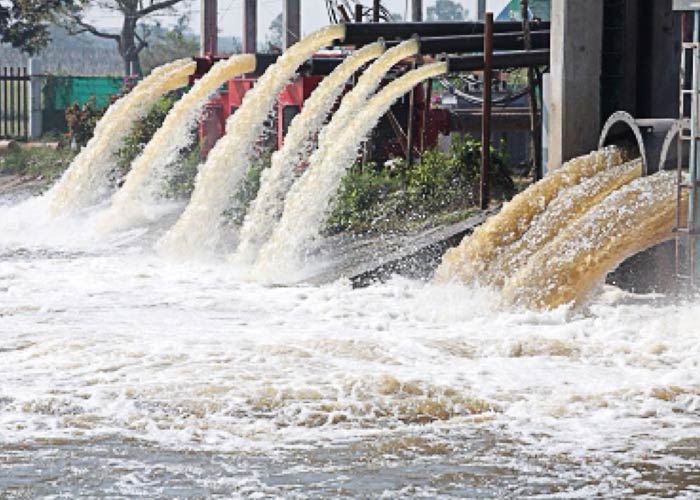Life and environment complement each other. Pure water, earth, air are the primary conditions of our healthy life. Climate change or global warming has become a major cause for concern throughout the world. Scientists from around the world have pressed the alarm bells over the rapidly changing climate of the Earth. The phenomenon of climate change has emerged as a major threat to mankind, affecting not only the developed, but all the countries of the world. The ice sheets in many parts of the world are melting, and sea levels are increasing. Concrete steps are required to prevent climate change, if we want to save life on Earth. It is imperative that we need to preserve our environment and nature for both present and future generations. Following are some important facts about climate change:
–> One of the reasons behind the seriousness of the climate change is the continuous growing population of the world, which is likely to surpass approximately 9 billion, i.e. 900 crore by 2040. Now the population is close to 7.5 billion, and China and India’s “contribution” is more than 2.50 billion – more than a third!
–> In the last 50 years, the global population has doubled, but consumption of natural resources has quadrupled.
–> The world’s most affluent people numbering around 50 crore spread 50% of all carbon dioxide emissions, whereas 300 crore poor people cause only 6% pollution throughput the world.
–> It has been calculated that the quantum of ‘greenhouse gases’ emitted within just two weeks due to over 40000 participants in the Copenhagen Climate Change Conference – December 2009 was more than the total emissions generated by 600,000 Ethiopians throughout the year.
–> The annual expenditure of an average Bangladeshi citizen is far below that of two pet dogs of ‘German Shepherd’ species in Europe and America.
–> As per a 2005 UN report, exploitation of natural resources is so widespread that it is doubtful whether future generations can survive.
–> According to Christopher Flavin, president of the Worldwatch Institute, a globally focused environmental research organization, the modern culture of consumption has severely affected the environment; it has not led to a happy human life.
–> The over-exploitation of the world’s resources has increased as now people have been by indulging in mindless show-off, consumption and amassing physical means.
–> According to the statement of Erik Assadourian, a leading author of a report of the Worldwatch Institute, we have to change the culture of materialism developed in the last two centuries, but the unfortunate fact is that it is not limited to developed countries, but it is taking developing countries too in its grip very fast.
–> America used to emit largest amount of pollution, but now China is also not far behind. China has now become the world’s largest market for cars consumption.
–> On the other hand, we have a country like Ecuador, where the inhabitants of the world have taken the vow of worship of Mother Earth and they are insisting that they would not promote enjoyment based on the elements of consumption that the Earth cannot provide again and again.
–> Greenhouse gases absorb a large part of the energy from the sun and disperse it across the world, transmitting it to the four directions of the Earth for the existence of life – it is called Greenhouse Effect.
–> These gases make a natural cover or layer over the Earth and protect it from more heat. The sun’s heat travels to many parts of the Earth and then goes back to the space.
–> However, human activities are increasing the amount of these gases to the hazardous levels, leading to climate change.
–> According to the World Meteorological Organization (WMO) of the United Nations Climate Agency, the average global temperature in 2016 was 1.1 degrees Celsius above the previous period.
–> Human activities such as the use of coal, petrol and natural gas are greatly responsible for large-scale emission of greenhouse gases.
–> The fossil fuels are burnt in large amounts by the humans in the wake of growing urbanization, and industrialization, resulting in the excessive presence of greenhouse gases in the environment.
–> The layer of greenhouse gases that absorb part of the sun’s energy is getting thicker. It is absorbing excess rays of the sun which are not going back to space.
–> As this layer is absorbing more heat it is increasing the temperature of the Earth.
–> In the last 100 years, the world’s temperature has increased by at least 0.85 degree Celsius (53 degrees Fahrenheit). Not only has this, during this time sea level also increased by 20 centimetres (8 inches).
–> For the past century, the average temperature of Antarctica is increasing by double the average temperature of the Earth. In Antarctica, the snow-covered area has decreased by 7 percent.
–> Heavy rains are occurring in some parts of North America, parts of northern Europe and of northern Asia, while the Mediterranean and South Africa are increasingly witnessing droughts.
–> According to an estimate, if the emission of greenhouse gases continues like this, the global temperature could rise by 3 to 8 degrees in the 21st century.
–> Power production based on coal, revolutionary changes in technology, vehicular emissions, coal mining, changes in the lifestyle of human beings (use of refrigerators, air conditioners, cars etc), besides indiscriminate use of chemical fertilizers in modern agriculture are among the major causes of climate change.
–> All these activities are increasing the emission of greenhouse gases, particularly the carbon dioxide into the environment which is largely responsible for climate change, as it increases the pace of global warming.
–> Among other reasons, indiscriminate cutting of forests in the name of industrialization by the human beings has posed a major threat to the environment.
–> Indiscriminate cutting of forests in the name of industrialization by the human beings has been a major threat to the Earth, its environment as well as its climate.
–> By absorbing carbon dioxide, trees help us reducing the impact of greenhouse gases on the environment and thus help the Earth maintain its weather cycle.
–> With the decreasing number of trees due to deforestation, the amount of carbon dioxide is increasing vastly in the Earth’s atmosphere.
–> There has been an indiscriminate cutting or burning of the forests by humans for their growing requirements for farming land as well as settling their rapidly growing population.
–> The slash and burn farming, under which farmers cut down or burn trees on mass level, is also responsible for reducing the green cover on Earth.
–> Logging operators resort to cutting of trees in the forests all through the world to illegally supply wood to paper industry.
–> Growing requirement of land for urban settlements is another reason fuelling deforestation.
–> It has led to disturbance or irregularities in the rain cycle, which is the biggest indicator of climate change.
–> Due to adverse impact on the rain cycle, in some places of the world a drastic rise or fall in temperature has been visible.
–> If there is snowfall in the northern hemisphere, melting of ice in the Arctic Ocean, and melting of glaciers, unseasonal rains and volcanic eruptions have occurred across all continents.
–> In fact, the whole climate cycle is becoming irregular, resulting in problems of drought, excessive rainfall, flood, cyclone etc.
–> Also, summers in various parts of the world are becoming colder or hotter and in some countries the weather is becoming completely dry.
–> Apart from deforestation, animal husbandry activities such as raring of cows, pigs and chickens also result into emitting large amount of greenhouse gases.
–> These activities have contributed to the irregularities in the climate cycle. Consequently, we are facing the worst climate change conditions today.
–> Natural causes are no less responsible for climate change: ocean currents, shifting of the continents, volcanic eruptions, tilt in the axis of the Earth, natural deforestation, collision of meteorites and comets, etc.
–> The oceans are warming due to the melting of glaciers. It is estimated that within half-century, the water level of the ocean will increase by about half a meter.
–> Considered as a major constituent of the climate mechanism, oceans will greatly fuel the temperature of the Earth as their exposure to the sun’s heat increases due to climate change.
–> Global warming is responsible for disturbing the natural cycle of the global thermohaline circulation system (THC) which constitutes of heating, cooling, downwelling and upwelling of the surface water by the oceans. This system gets determined through the flow of air, operated by the ocean currents.
–> There are many adverse consequences of rising sea level such as devastation of coastal areas, submerging of land into water, flood, soil erosion, side effects of saline water etc.
–> It was about millions of years back when the continents in which we are living today took their shape through the gradual drifting of the landmass. The shifting of the landmass leads to climate change as it shifts the position of the water bodies across the world.
–> Due to volcanic eruptions, huge amounts of dangerous sulphur dioxide (SO2) gas, dust, ash and vapour are emitted in the atmosphere. All these components are responsible for bringing drastic changes in the climate cycle of the Earth.
–> Natural Deforestation on mass level is one of the biggest causes of climate change. Forest fire, drought, tropical storms as well as volcanic activities devastate acres of natural forests. Hurricanes cause damage to the rainforests each year to an extent that their recovery is possible only in centuries.
–> When meteors and asteroids strike the Earth they cause enormous destruction and discharge high amount of gases and firestorms to thousands of miles, besides causing acid rains.
–> The increasing demand for food due to increasing population has created tremendous pressure on agriculture, where more production has become the norm, even if it means indiscriminate use of chemical fertilizers or pesticides with negative implications for climate.
–> Climate change threatens bio-diversity as animals, birds and plants live in the natural environment and are very sensitive to any adverse change in it.
–> The poor and developing countries stand to suffer most due to climate change as they do not have adequate capacity and resources to deal with the dangers of climate change.
–> On April 22, 2016, more than 130 countries including India signed the historic ‘Paris Climate Change Agreement’ to counter the rising threat of climate change.
–> The Paris Agreement will be applicable from the year 2020.
–> Under this agreement, developed countries will provide financial assistance to the developing countries to achieve carbon emissions targets annually from 2020 onwards.
–> The Paris Agreement will increase the pressure on countries to prevent rising temperatures of the Earth and decrease greenhouse gas emissions.
–> It includes 55 countries which emit more than 55 percent of the greenhouse gas.
–> The developed countries must make 40 percent reductions in their carbon emission levels by 2020.
–> Similarly, developing countries must reduce their emissions to the tune of 15 to 30 percent by 2020.
–> Now, the pressure to bring about greenhouse gas emissions reduction in all countries and reducing global temperatures has increased the pressure to implement the agreement.
–> At the same time, it proves that the all the countries are increasingly conscious to overcome the rising global temperature.
–> The countries involved in the agreement want to limit the global warmingto well below 2°






